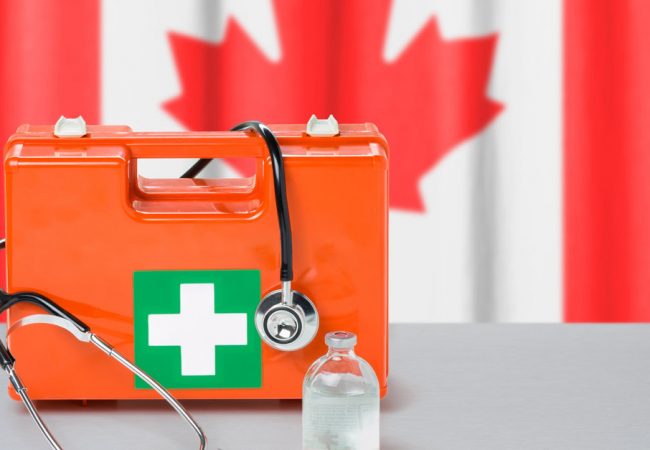Read the Report
Read the Column
CHRONICLE HERALD COLUMN: Putting Medical Travel Within Reach of Regular Nova Scotians

If Nova Scotia copied a health-care policy from the European Union (EU), the government could help patients immediately — especially low-income and middle-class people who are facing long waiting lists and who are unable to do anything about it.
The EU policy is called the “cross-border directive” and what it does is allow a patient in one EU country to travel to another EU country, pay for surgery and then be reimbursed by their home country. Reimbursements cover up to the amount the government would have paid to provide the procedure for the patient locally.
Here’s how it could work in Nova Scotia:
Imagine you’re one of the many Nova Scotians who face a 619-day wait time for knee surgery. You could spend the next two years popping painkillers, potentially leading to liver damage and maybe even addiction, or you could travel to another country or province and receive surgery within weeks.
Before looking around for private clinics outside the province, you look on the Nova Scotia government’s website and see that the reimbursement rate for your procedure is, say, $10,000. A private clinic you find in Quebec charges the same amount. If you choose that clinic, once you’re reimbursed for paying for surgery, travel expenses are your only real costs.
Let’s assume you find a clinic in Maine that charges $11,000. If you visit that clinic, once you are reimbursed, you’ll be out of pocket $1,000 for the surgery plus travel expenses. In Ireland, however, you find a clinic that is only $9,000. If you choose this option, the Nova Scotia government would actually save money as it costs less than what they pay for the procedure locally.
Again, these are made-up numbers to demonstrate how the system works, but you can see how it could help patients.
Currently in Canada, it’s not uncommon to hear of wealthy patients, and some middle-income patients, travelling abroad for surgery to avoid long waiting lists in Canada. Those who are left behind are often low-income patients and middle-income patients who can’t afford the expense. This policy could help those patients especially.
The benefits of this policy option are significant. Patients who are living with chronic pain could find relief within weeks. Patients who have been unable to work could return to the workforce and increase their earnings. In some cases, patients returning to the workforce would earn more and pay more in income taxes rather than relying on social assistance. SecondStreet.org has even heard of patients developing depression and having suicidal thoughts from facing long, painful waits for surgery. Many of those cases could be alleviated as well.
Nova Scotia Health Authority data obtained by SecondStreet.org shows that 51 patients died in 2020-21 while waiting for surgeries that could have saved their lives. Perhaps implementing a “cross-border directive” could even save some lives in Nova Scotia?
But it’s not just patients who travel outside the province who’d benefit. This policy would also help patients who stick it out on waiting lists in Canada. Each time a patient ahead of them in line decided to travel abroad for surgery, everyone else could move up a spot on the waiting list.
For governments, a positive aspect of this policy option is that it doesn’t really increase costs. If a government pays, say, $10,000 for a patient to receive surgery abroad this year, instead of paying the same amount for the patient to receive surgery in Nova Scotia next year, the cost balances out.
To be sure, this policy is not perfect. For instance, patients have to cover their travel expenses. Further, many patients aren’t comfortable with leaving their province for surgery. But as this policy would be completely voluntary, no one would have to use the program unless it made sense for them.
In closing, we can’t forget that Canada is facing a health-care crisis. We need to start thinking outside the box to help patients. The EU’s cross-border directive could help patients immediately. Isn’t that the point of health care in the first place?
Colin Craig is the president of SecondStreet.org.
This column was published by the Chronicle Herald on August 4, 2022.
You can help us continue to research and tell stories about this issue by making a donation or sharing this content with your friends. Be sure to sign up for our updates too!


